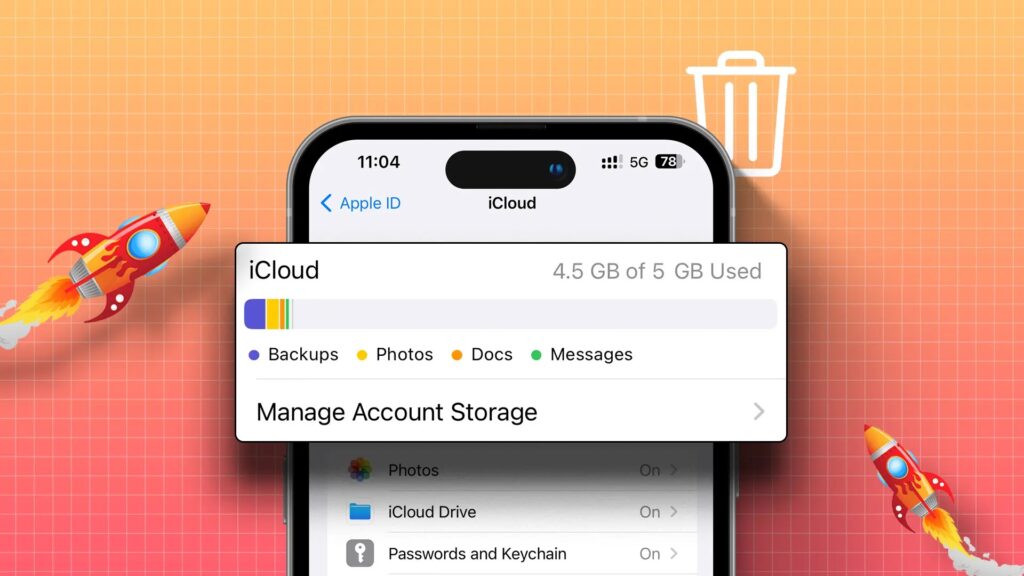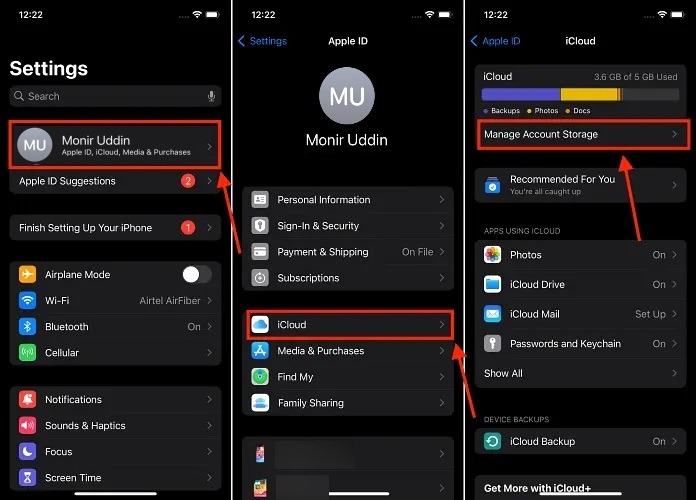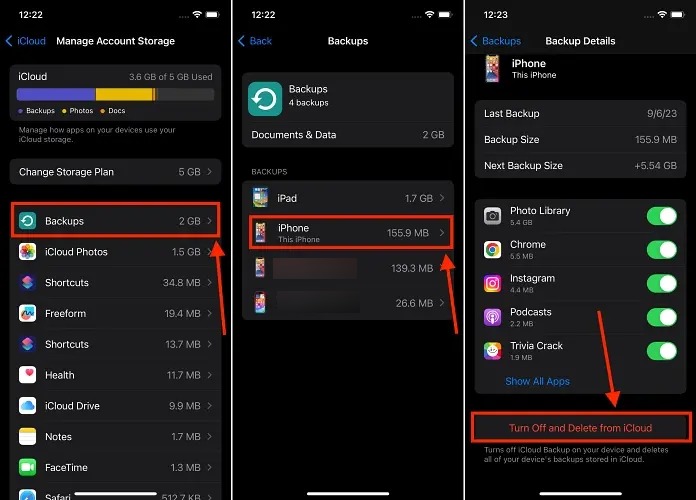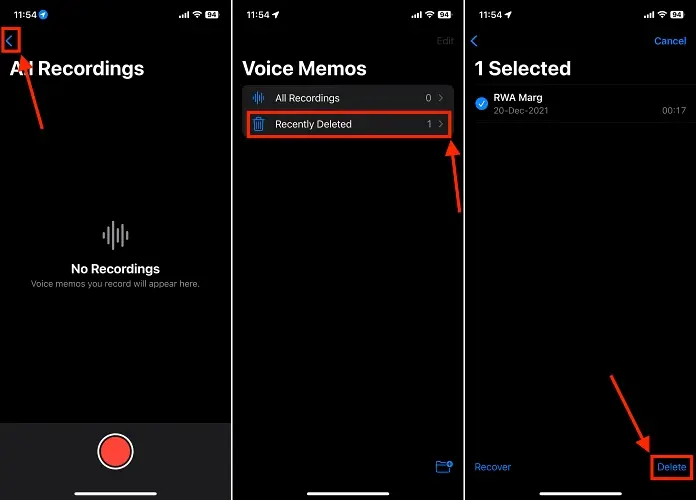
iCloud, the cloud storage service provided by Apple, presents many conveniences. However, the initial 5GB of free storage can become quickly overwhelmed. Therefore, it’s crucial to manage your iCloud storage effectively to ensure smooth operation of your Apple devices. Although upgrading to iCloud+ for additional storage is an option, understanding how to manage your existing storage is always wise. Deleting unnecessary files and organizing iCloud backups are among the effective methods to free up space. Continue reading to discover how to clear iCloud storage on your iPhone, iPad, and Mac.
1. Manage and Delete Unwanted iCloud Data
When utilizing iCloud Drive for document storage, it’s important to identify and remove redundant or outdated data. Delete any unnecessary files and documents that are no longer relevant to you. You can accomplish this directly through iCloud.com or by using the Files app on your iPhone. Additionally, if you have large files that you still need but want to free up space in iCloud, consider transferring them to alternative storage solutions.
To remove unwanted files from iCloud using the Files app, follow these steps:
- Open the Files app on your iPhone and tap the Browse button located at the bottom.
- From the Locations section, select iCloud Drive.
- Now, browse through your files and folders to locate the ones you want to delete from iCloud.
- Select the files and folders you wish to remove.
- Tap the Delete button located at the bottom of the screen to confirm the deletion.

2. Deleting Unnecessary Photos and Videos from iCloud
Many of us rely on our iPhones to capture unforgettable photos and videos, which we cherish later. By default, iCloud backs up all these visual memories to the cloud. Consequently, photos and videos consume a significant portion of iCloud storage. Therefore, deleting large photos and videos that are no longer needed or have already been backed up in services like Google Photos is the perfect solution to reclaim space on your iCloud.
To learn how, explore the steps for deleting photos from iCloud.
3. Manage iCloud Backups
After enabling iCloud backup on your device, essential data from your iPhone or iPad is automatically backed up, allowing you to restore your device from backup at any time. However, over time, these backups can accumulate and occupy a significant amount of space in iCloud.
To address this issue, it’s advisable to review and delete older backups or those that are no longer necessary. You don’t necessarily have to resort to the iCloud website for this task; it can be done directly through your iPhone’s settings. Here’s a guide on removing older iCloud backups from your iPhone:
Here’s a concise guide on how to delete older iCloud backups directly from your iPhone:
- Access the Settings app on your iPhone and tap on your Apple ID located at the top.
- Next, navigate to “iCloud” and proceed to select “Manage Storage.”

- Tap on “Backups” to view a list of devices backed up to iCloud.
- Choose the device for which you want to delete backups.
- Tap on “Turn Off & Delete” to remove the selected backup from iCloud.

Note: Deleting a backup from iCloud will also turn off iCloud backup for that device. You can manually enable it again through the iCloud settings if needed.
4. Optimizing Email and Messages Storage
Attachments and media received in emails and messages can take up a considerable amount of iCloud storage. We recommend reviewing and deleting unnecessary attachments and media to free up space. This can significantly reduce iCloud storage usage, particularly if you receive numerous media-rich messages or emails.
5. Review App Data
Certain apps on your iPhone or Mac may utilize iCloud for data storage, which can significantly impact your iCloud storage usage. It’s important to assess these apps individually and decide whether you need to retain their data in iCloud. You can adjust the settings of these apps or delete unnecessary data associated with them to free up iCloud storage space. Here’s how to do it:
- Open the Settings app on your iPhone and select the Apple ID option at the top.
- Scroll down and tap on iCloud, then tap on Manage Storage.

- Next, tap on Backups, which will display a list of your Apple devices backed up to iCloud.
- Choose the Apple device you are currently using from the list.
- You’ll see a list of apps that are utilizing the most space on iCloud.

- Toggle off the apps you want to remove from iCloud storage, then tap Turn Off.
- Confirm your action by tapping Turn Off and Delete from iCloud.

6. Empty Trash in Photos and Notes App
The Photos and Notes apps include a “Recently Deleted” folder where deleted items are stored temporarily before being permanently deleted from iCloud. It’s important to regularly check and empty these folders to reclaim or clear iCloud storage space. This simple step is often overlooked but can result in significant space savings in iCloud, particularly if you frequently delete photos and videos.
7. Delete Voice Memos
When you record a voice memo on an iCloud-enabled Apple device, it is automatically uploaded to your iCloud account. These voice memos contribute to iCloud storage usage, and the amount of storage they occupy depends on factors such as duration and quality. To clear iCloud storage, you can delete unwanted or older voice memos. Here’s how to delete voice memos on iPhone or iPad:
- Open the Voice Memos application on your iPhone or iPad.
- Choose the voice memos you wish to remove.
- Once selected, tap the Delete button located at the bottom right corner of the screen.
- Confirm the deletion by tapping Delete.

After deleting recordings in the Voice Memos app, they are moved to the Recently Deleted folder, where they remain for the next 30 days. To clear iCloud storage completely, you must also delete the recordings from the Recently Deleted folder. Here’s how:
- Tap the “<” button at the top left corner of the Voice Memos app.
- Select the Recently Deleted option from the menu.
- Now, choose the recordings you want to delete.
- Tap the Delete button located at the bottom right corner of the screen.

- Confirm the deletion by tapping the Delete Forever button on the confirmation prompt that appears.

8. Review Recommended Suggestions
Apple has introduced a smart feature across all its iPhones to assist users in optimizing their iCloud storage by providing helpful recommendations. Once you access the iCloud storage settings on your iPhone, you can find the Recommendations section located under the color-coded storage bar. These recommendations, curated by Apple, aim to assist you in managing how your device’s apps utilize the available iCloud storage. Whether you choose to accept or reject these recommendations is entirely at your discretion. Here’s how you can view iCloud recommendations on your iPhone or iPad:
- Open the Settings app on your iPhone.
- Tap on your Apple ID located at the top of the Settings menu.
- Locate and tap on the iCloud option.
- Under the iCloud settings, tap on the “Recommended For You” button to access the iCloud recommendations.

By following these steps, you can easily access and review the iCloud recommendations provided by Apple. Remember, regularly maintaining and consciously managing your iCloud storage will not only optimize your device’s performance but also ensure sufficient space for storing new memories and data.

Your article helped me a lot, Thanks!